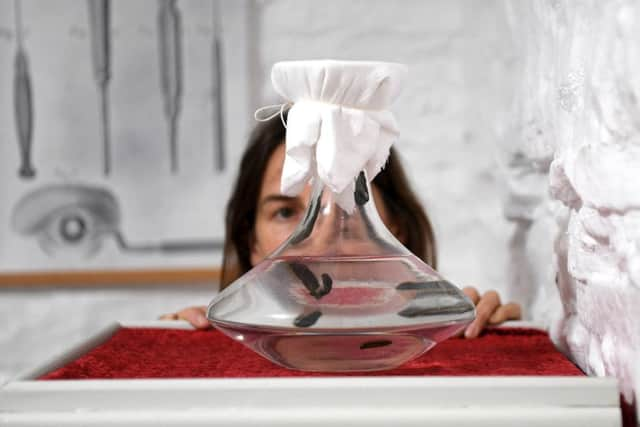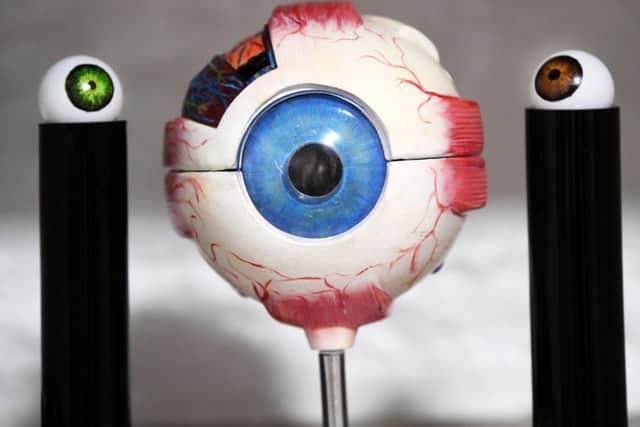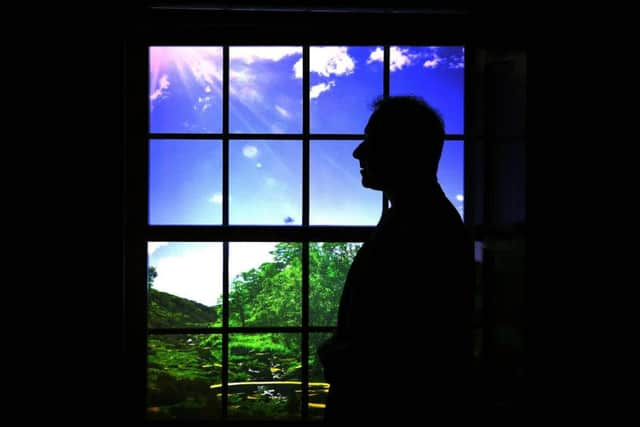Patrick Brontë is the father who outlived all his children and the focus of an exhibition at the Brontë Parsonage Museum - we talk to curator Frank Cottrell-Boyce
That young man was, of course, Patrick Brontë – father to the famous sisters – and his legacy is being celebrated throughout this year at the Parsonage Museum, home to the family that produced some of the best-loved novels of the 19th century.
In addition to the exhibition Patrick Brontë – In Sickness and in Health which explores how illness, poor health and death plagued his life, a new installation, launched this month, has been created by the Brontë Society’s creative partner for award-winning screenwriter and novelist Frank Cottrell-Boyce. How My Light is Spent, created in collaboration with illumination artists Illuminos, creative audio-visual specialists Lumen and leading artist Jo Pocock,


Advertisement
Hide AdAdvertisement
Hide Adinvestigates Patrick Brontë’s thoughts and memories as he recovered from a cataract operation which he underwent without anaesthetic at the age of 70 in Manchester in August 1846, having already outlived his wife and two of his children.
“Our aim was to make something that could be part of your day out at Haworth,” says Cottrell-Boyce whose film credits include Welcome to Sarajevo, Hilary and Jackie, 24 Hour Party People, Millions and A Cock and Bull Story. “We wanted to create an installation that was exciting for anybody – so that everyone from little kids to Brontë scholars could gain something from it.
“I also wanted to find a way of celebrating Patrick. Everyone knows about Charlotte, Emily, Anne – and even Branwell – but Patrick is not really talked about that much. He came from very humble beginnings in impoverished rural Ireland and through his own efforts he managed to get in to Cambridge University; that is something that rarely happens, even today.


Advertisement
Hide AdAdvertisement
Hide Ad“He was very learned and knowledgeable but he was also totally engaged with the needs of his community and was a committed campaigner on public health.”
Housed in the cellar, an area of the Parsonage that has never before been open to the public, How My Light is Spent, without wanting to give too much away, is a truly magical, evocative and profoundly moving immersive experience. It features film, spoken word, music, poetry (the title of the installation refers to the Milton sonnet When I Consider How My Light is Spent), elements of theatre and innovative illumination and takes the audience from a place of literal and figurative darkness into light. “I was delighted that we could use the cellar because the Brontës used to play down here as children, so there is that nice connection,” says Cottrell-Boyce. “We wanted to explore darkness and creativity but also think about family relationships and telling those stories.”
The installation partially recreates the darkened room in Manchester where Patrick was kept for three weeks to recuperate after his surgery. Throughout that time he was tended to by Charlotte who began writing Jane Eyre during her father’s period of convalescence. Knowing this lends an extra resonance to the opening lines of the novel – “There was no possibility of taking a walk that day” – which may have been an expression of her own feelings of enforced containment due to her filial obligations.


Cottrell-Boyce was also keen to restore Patrick’s reputation as a loving, nurturing and encouraging father which was tarnished somewhat by Elizabeth Gaskell’s depiction of him in her biography of Charlotte as bad-tempered, eccentric and controlling. “I think Mrs Gaskell needed to find a way of making him seem oppressive and that Charlotte, and the others, flourished despite him,” he says. “He was a difficult man and he wasn’t the calmest of people but he encouraged his children to read a lot and he wanted them to know about politics and the world – and he gave them plenty of time to play. I think he had a huge positive influence on them.”
Advertisement
Hide AdAdvertisement
Hide AdThere is documentation to suggest that Patrick was an accomplished storyteller who would entertain his children with tales at the dinner table which would also have fired their imaginations and fed into their own creativity. “I was brought to the Parsonage as a kid and what I remember most about that visit is seeing those little notebooks and understanding how important children playing was,” says Cottrell-Boyce. “And it definitely enabled me to think about becoming a writer because I saw that it was something that someone from an ordinary house, and someone with a Northern accent, could do.”
There were newspapers and illustrated periodicals that Patrick subscribed to around the house which the children read and he also introduced them to the work of Byron which would prove to be an influence, particularly in the later writing of Charlotte and Emily. In their little notebooks, Emily and Anne, Charlotte and Branwell famously created entire imaginary worlds, fuelled by the kind of intellectual curiosity and playfulness encouraged by their father. “Part of what I wanted to do with the installation was to celebrate the role that family plays in creativity,” says Cottrell-Boyce. “We wanted to create something that is very human. I’m hoping people will find it really surprising and beautiful but also quite emotional.”
How My Light is Spent is at the Brontë Parsonage Museum, Haworth until November 1; Patrick Brontë – In Sickness and In Health runs until January 2020.